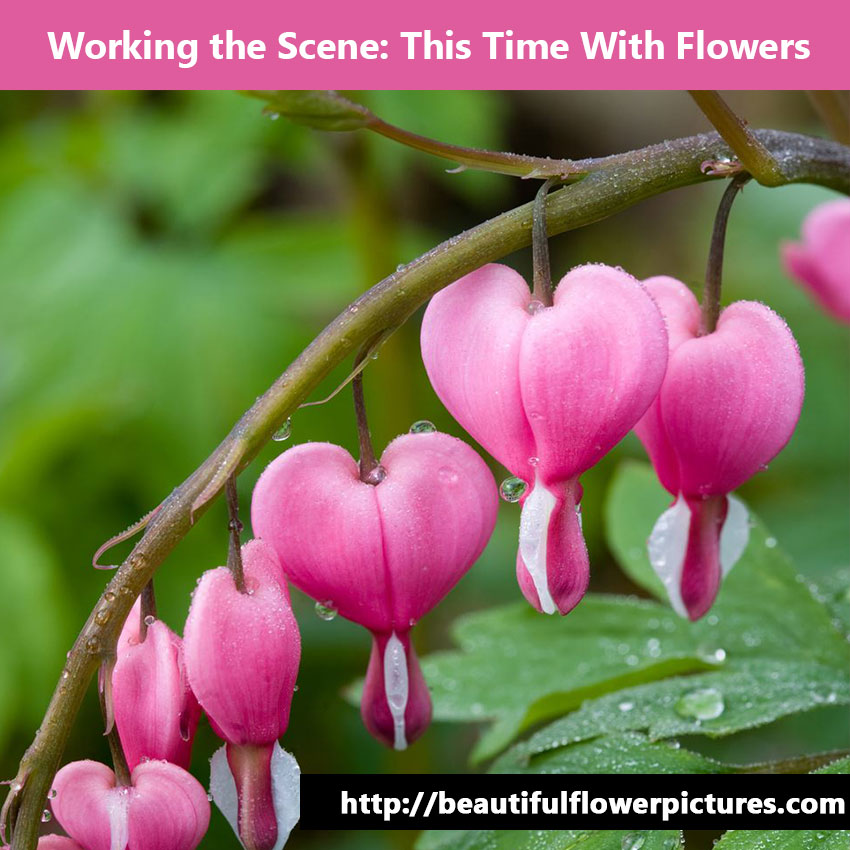
by hankinslawrenceimages | Apr 21, 2017 | Photo Tips, Workshops
A while back, I shared an article about Working the Scene where I talked about trying different compositions when you’re in the field photographing the landscape. Since then, I’ve gotten a few questions asking if I do the same thing when photographing flowers. And the answer is yes.
I do the same three things photographing a flower at a garden as I do when I’m photographing a landscape.
- Try different focal lengths. If you’re looking through a telephoto lens, you will get very different compositions then when you are using a wide angle lens. I often start with a wide angle lens, and then pull out my macro lens. Sometimes I’ll even pull out a longer telephoto lens if that’s what I need to get the photo I want.
- Try portrait and landscape compositions. The change from horizontal to vertical orientation of your camera will force you to include and exclude different parts of the scene, and will help you to think about the scene in different ways.
- Move around and try again. When I first see a flower or group of flowers I want to photograph, I usually see what I think is the perfect image in my mind. So I’ll set up my tripod and grab the lens I need, and create that photo. Then I’ll take a moment and review the image on the back of my camera to see if it’s what I want and more importantly, is it the best image I can create. If not, I’ll take another look at my subject and see if there is composition I like better, move my tripod, reassess my lens choice and take that photo. Re-evaluate and set up another shot if I still don’t have what I want. Most of the time I’ll create 4 or 5 very different compositions of a specific flower or group of flowers before deciding that I’ve what I’m looking for. Moving my tripod up or down, a few inches to the left or to the right can make all the difference in the world.
Here are some of my photos of a bleeding heart plant I took several years ago that illustrate how I work a scene with flowers
One photo I took was of the whole bleeding heart plant in front of a tree trunk and wall. Decided it was too busy and didn’t really show off the heart shaped flowers.
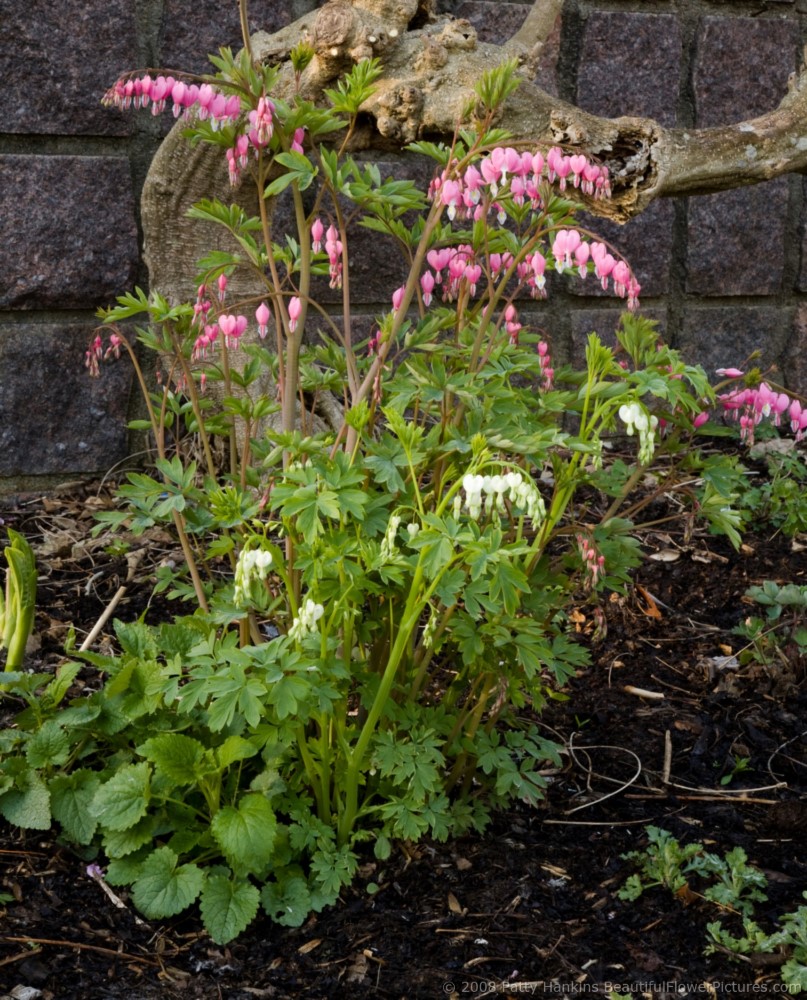
Bleeding Hearts © 2008 Patty Hankins
So I moved in closer to just included a few of the branches. I also changed my aperture so that the wall and tree trunk were no longer in sharp focus. Still not right.
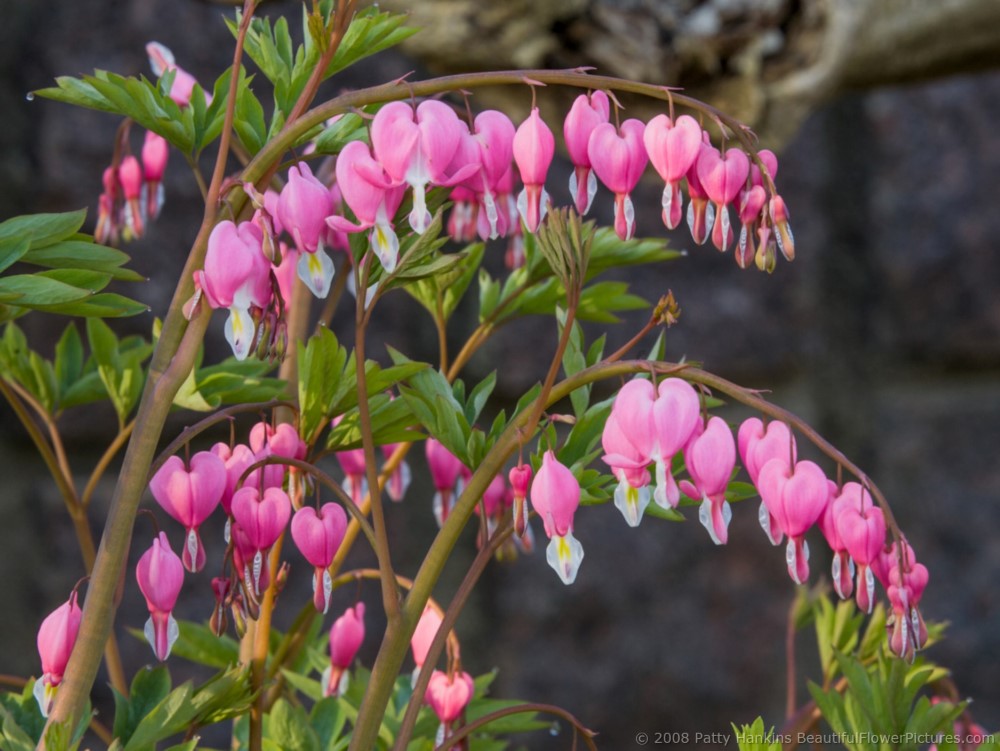
Bleeding Hearts © 2008 Patty Hankins
So next I moved my tripod around to another side of the plant, framed up just one branch of blossoms with a very shallow depth of field so only one flower was in sharp focus. Still not right.
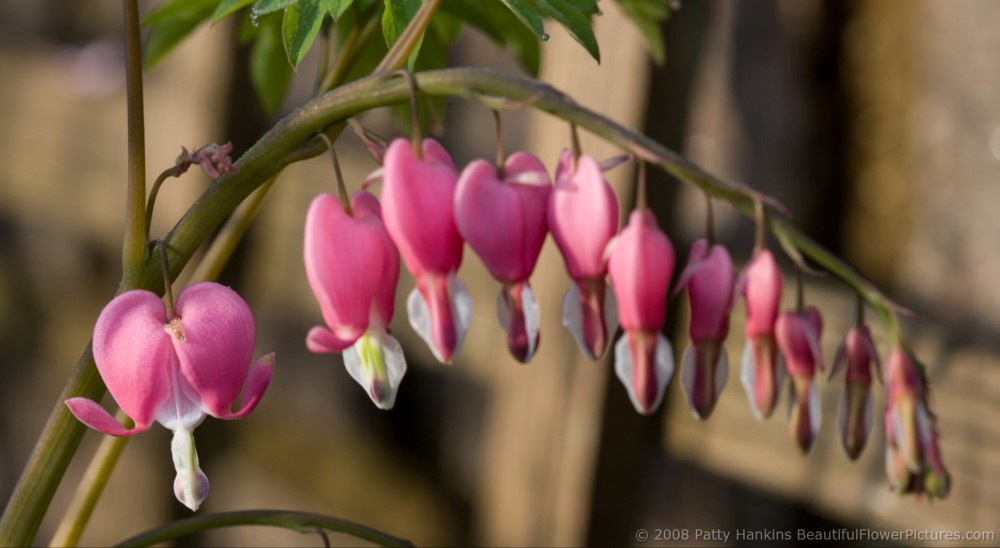
Bleeding Hearts © 2008 Patty Hankins
So I switched to portrait orientation and moved in closer so I only had a few flowers in my photo. I also switched to my macro lens. Just didn’t like the light wood background or that the flowers in the upper right were in front of the main subject and out of focus. Still not right.
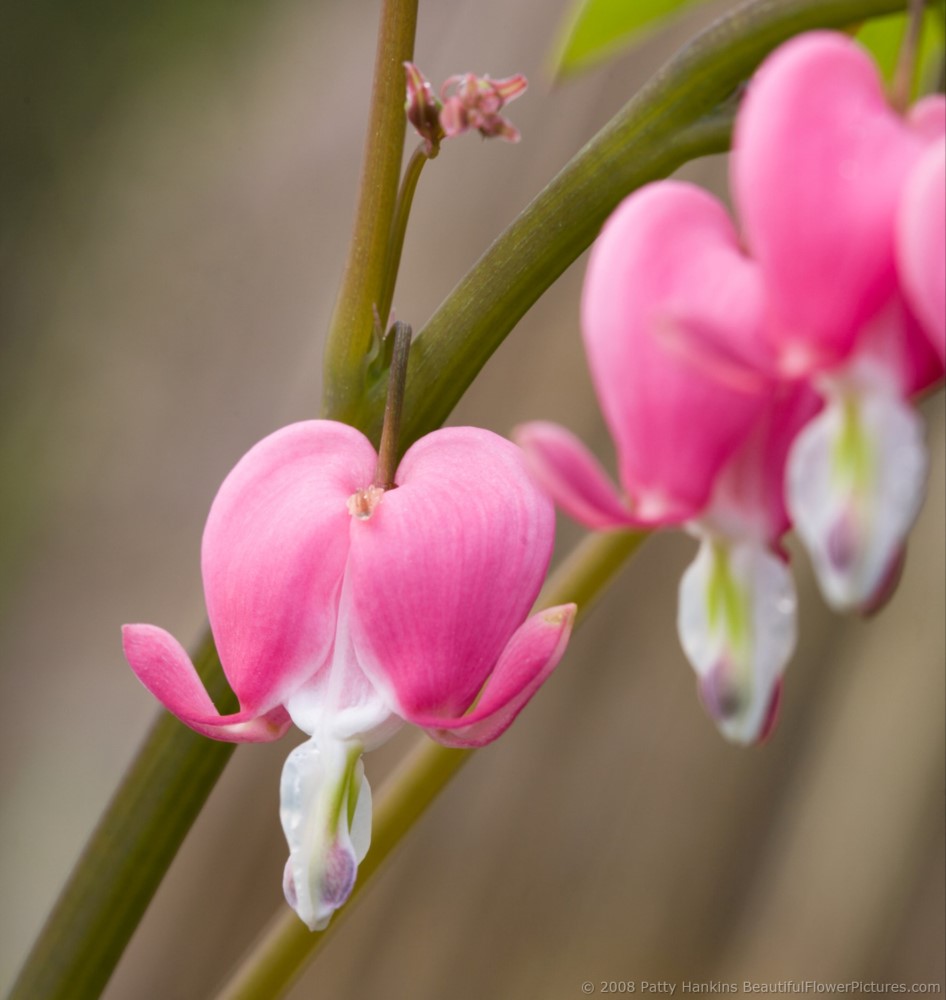
Bleeding Hearts © 2008 Patty Hankins
So I moved my tripod again so that the flowers were backed by green leaves instead of the brown wood and that I was further away from the bleeding hearts. This gave me the opportunity for a wider angle photo showing an entire branch of the flowers including the buds at the end. Better – but still not quite what I wanted.
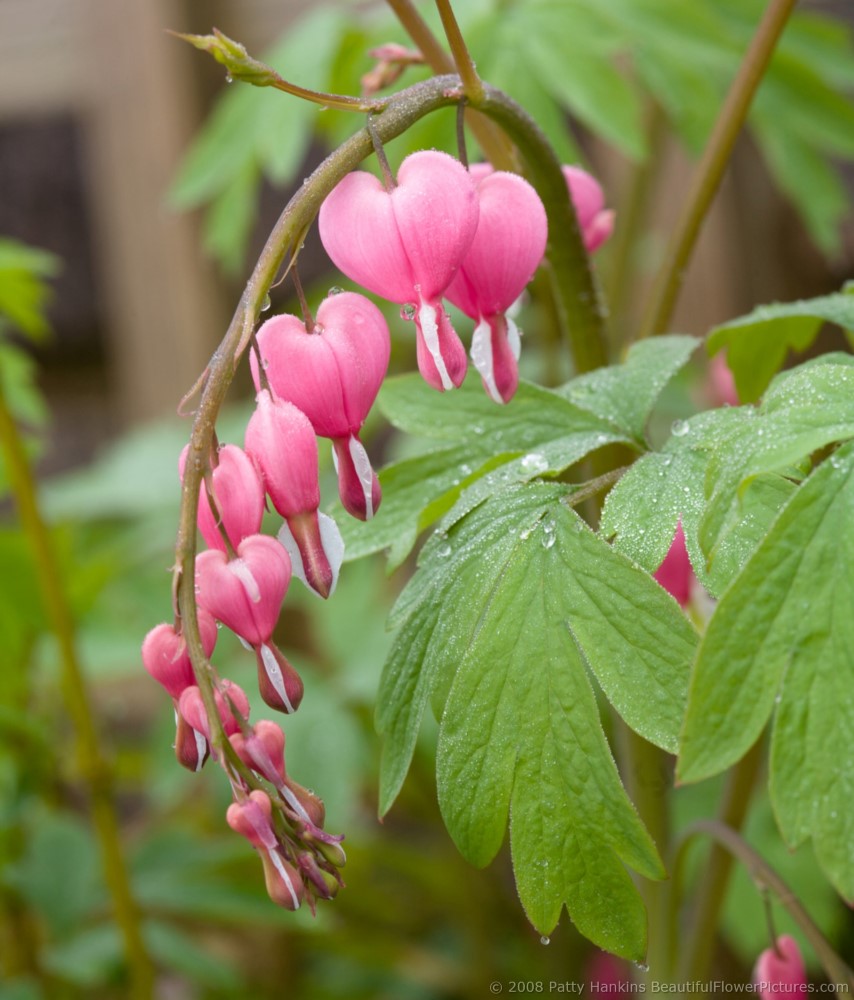
Bleeding Hearts © 2008 Patty Hankins
So I moved my tripod one more time – this time in a little closer and switched back to landscape orientation knowing I’d crop to a square for the final photo. I focused in on just a few of the heart shaped blossoms, made sure the water droplets were in sharp focus, and that the branch would act as a leading line to draw your eye through the photo. Finally I had my photo – and this has been one of my best selling photos over the years.
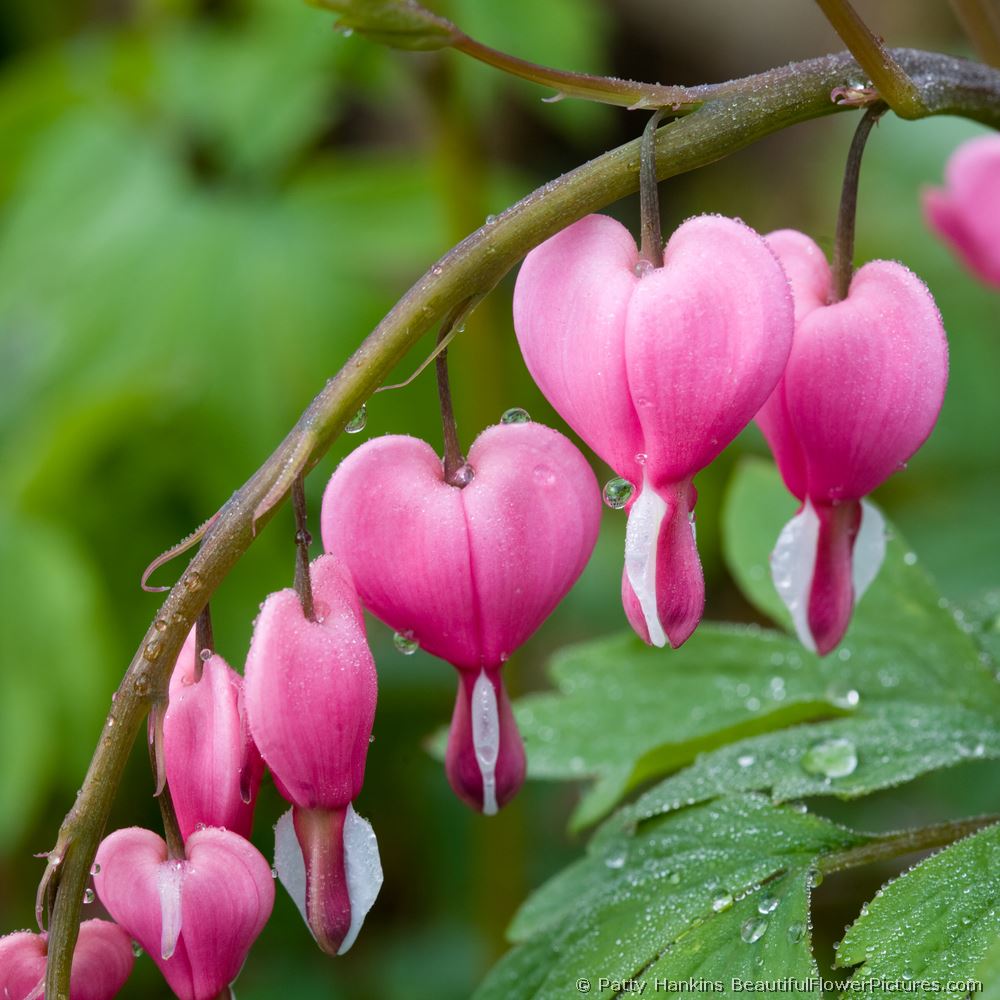
Bleeding Hearts © 2008 Patty Hankins
And if you are photographing at a botanical garden there’s one more photo you really should take when you are working the scene – a photo of the identification sign so you know what flower you’ve been photographing.
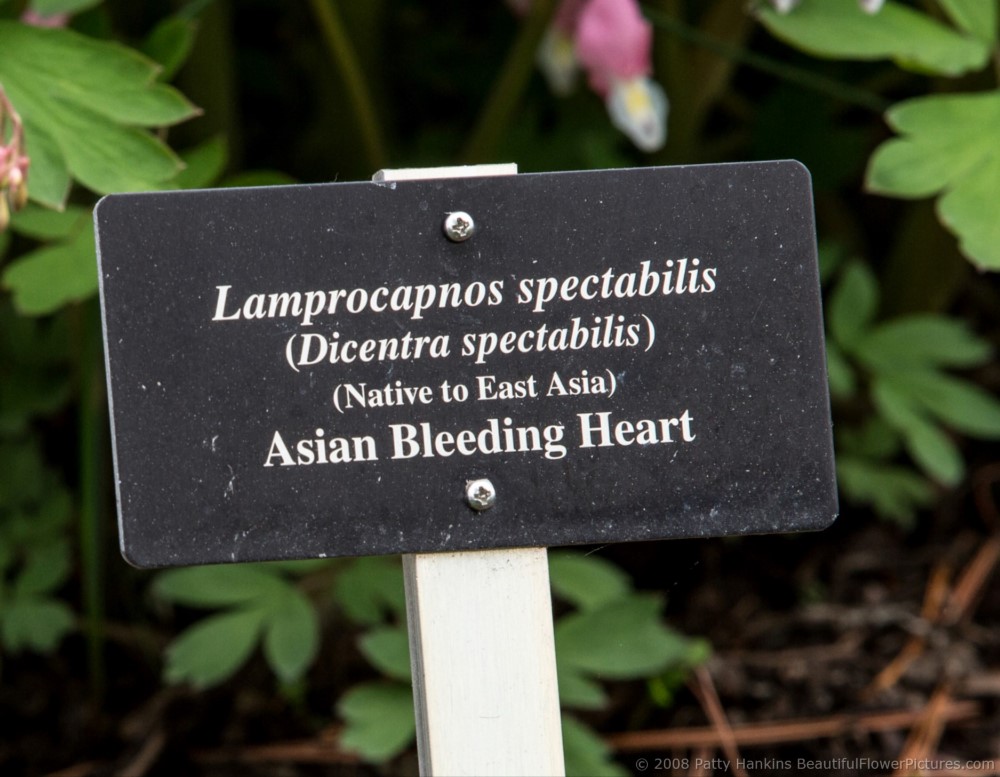
Bleeding Hearts © 2008 Patty Hankins
Working the scene is one of the ideas we’ll be talking about and practicing during my May 15-20 workshop – Photographing the Gardens of Philadelphia workshop and during my Morning on the Lavender Farm workshops.
All the details about the workshop and registration information for the workshops is at http://beautifulflowerpictures.com/photographing-gardens-philadelphia/ and http://beautifulflowerpictures.com/morning-lavender-farm-workshops/
Not sure if one of these workshops is right for you? Drop me an email and we can find a time to talk.
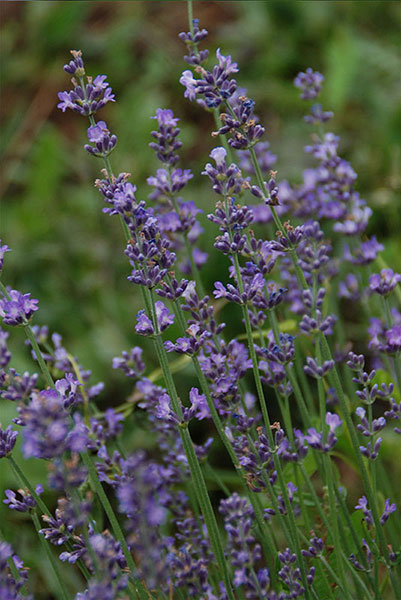
by hankinslawrenceimages | Apr 18, 2017 | Workshops
Imagine spending a morning photographing and spending time with other flower lovers on the largest lavender farm in Maryland!
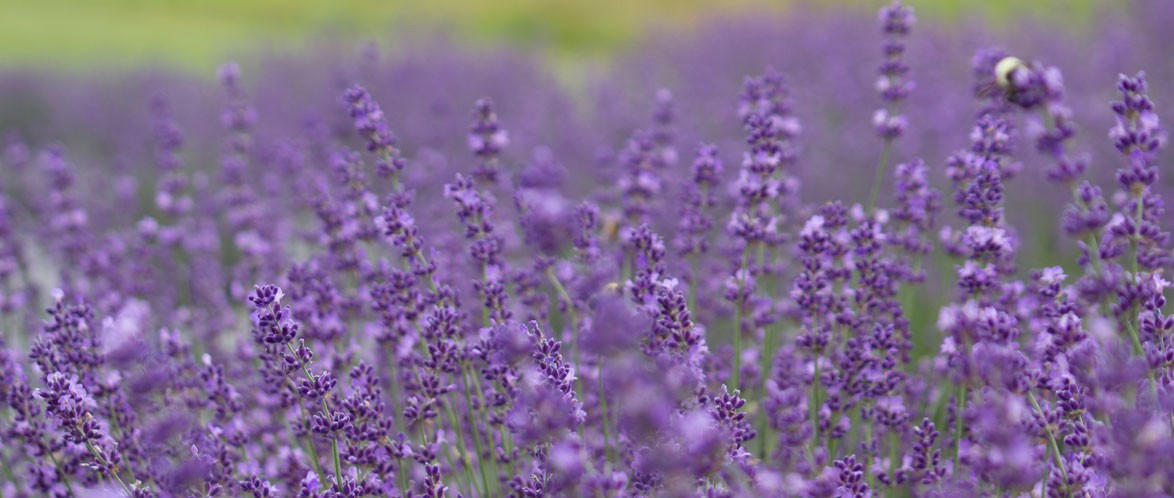
Imagine yourself photographing among rows of lavender plants in full bloom. Smelling the wonderful aromas. Hearing the songbirds in the woods. Learning how to take better photographs from a professional flower photographer. Shopping for handmade luxury bath products created with lavender from the farm and for beautiful flower photographs.
You can do all this — and more – by joining me for one of my morning photography workshops at Soleado Lavender Farm in Dickerson, Maryland (less than an hour from DC).
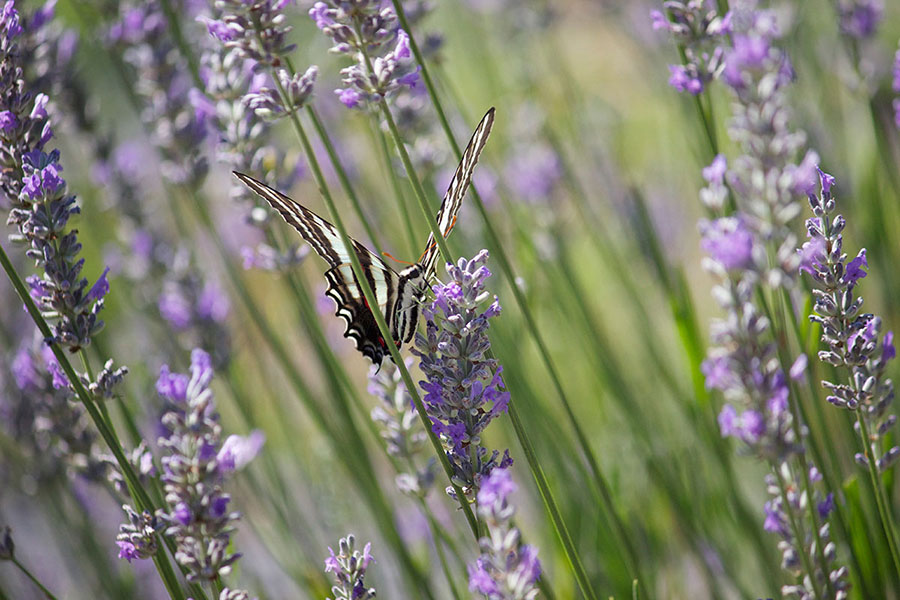
The workshops will run from 8 – 11 AM. During that time, we’ll have a brief discussion of flower photography and then head into the lavender fields to photograph. I’ll be with you in the field all morning helping you create wonderful photographs.
I’ll be offering my Morning on the Lavender Farm workshops three times this summer.
The first workshop, on Wednesday May 31, is designed for people who photograph with a cell phone. All you need is a phone with a camera.
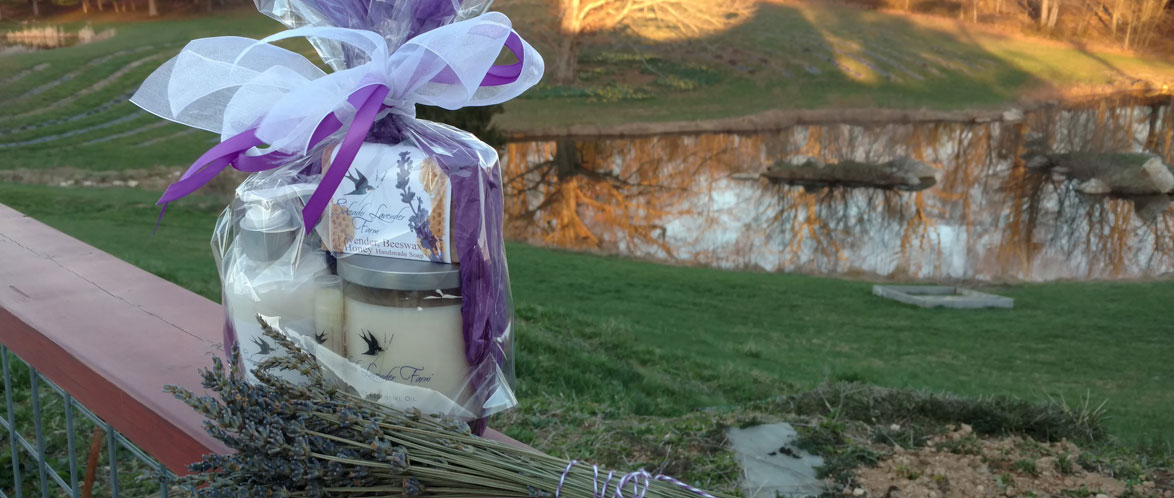
On Saturdays June 24 and July 8, we’ll be talking about photographing with a camera. You can use any camera from a simple point-and-shoot camera to the latest DSLR or mirrorless camera. If you have a macro lens and/or a tripod – bring them along. You may find them helpful for photographing during the workshop. But if you don’t have them, please DO NOT go out and purchase them just for this workshop.
Registration for any of the workshops is $ 75.00. Each workshop is limited to 15 students, so I can make sure I can give you the personalized attention you need.
You can find more information and register for these workshops on my website at http://beautifulflowerpictures.com/morning-lavender-farm-workshops/
Not sure if one of these workshops is right for you? Drop me an email and we can find a time to talk.
Photos on this post courtesy of Soleado Lavender Farm.
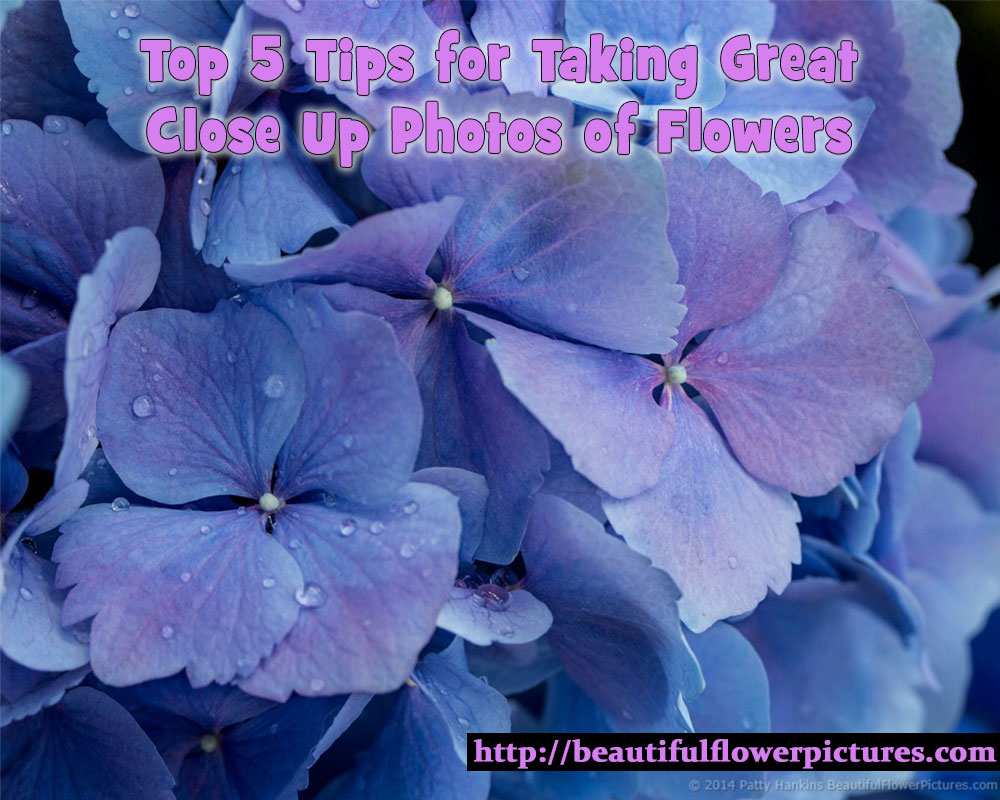
by hankinslawrenceimages | Mar 31, 2017 | Photo Tips, Workshops
Spring flowers are finally blooming here in the DC area. Enough cherry blossoms survived last week’s winter weather to bloom beautifully at the Tidal Basin. Wildflowers are starting to bloom at local parks. And it won’t be long until the tulips are blooming at local gardens.
Since for many photographers, spring means it’s time to get the camera out after spending the winter on a shelf, I thought I’d share an article from last year with you today about taking close up photos of flowers.
Spring is in full bloom here in the Washington DC area – even if we are having a bit of a cold spell this week. I can still see a few cherry blossoms on the tree in my front yard, the Virginia Bluebells are blooming at local parks and tulips are blooming at local gardens. As I’m photographing flowers on almost a daily basis, I’m noticing that I’m taking many more close up photos of flowers than I have in the past – especially when I’m in my studio. Many of the photos show only part of a flower — not even a whole blossom. The close up photos have gotten a great response from people who have seen them — and lots of questions about how I take them. So I thought I’d share a few tips on taking great close up photos of flower with you today.
1. Think about What Caught Your Eye: Before you click the shutter, think about what it is about the flower that caught your eye and made you want to photograph it. Was it the color, the shape, the dewdrops or the way light is striking the flower? Now compose your photos to highlight what caught your eye.
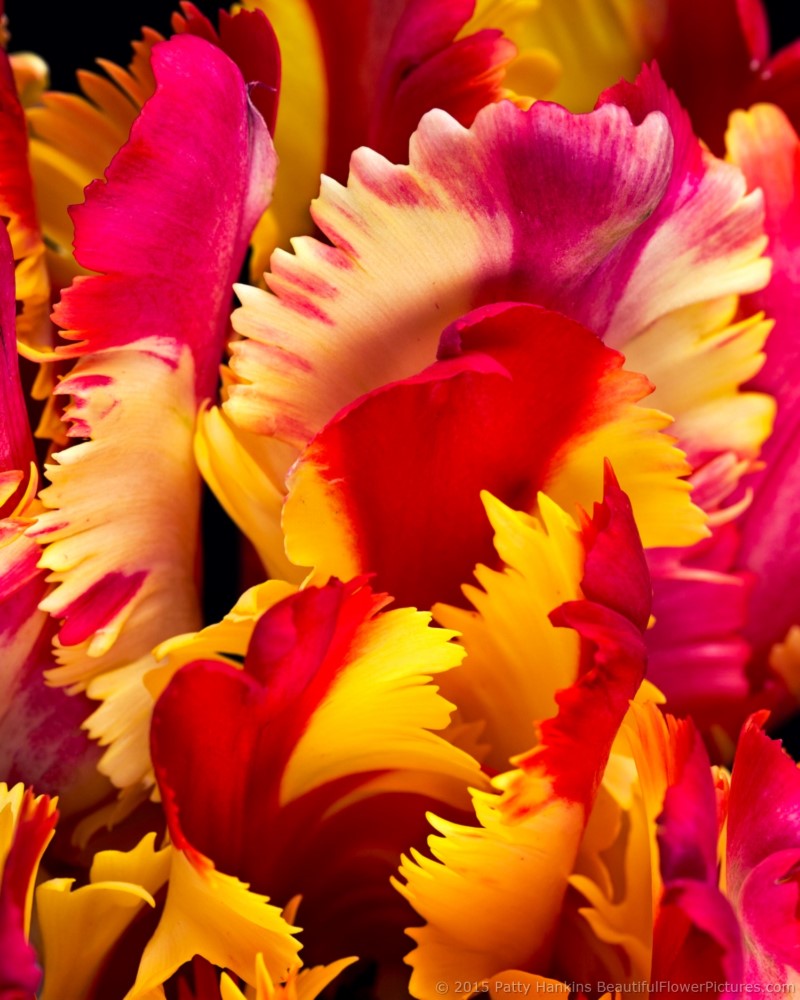
Petals of a Flaming Parrot Tulip © 2015 Patty Hankins
2. Use a Macro Lens (or Macro Setting on Your Camera) For close up photos you want to be able to get as close to your subject as possible. Macro lenses or the Macro Setting on your camera (often symbolized by a little flower) allow you to get much closer to a subject and still have it in focus than using either a non-macro lens or setting
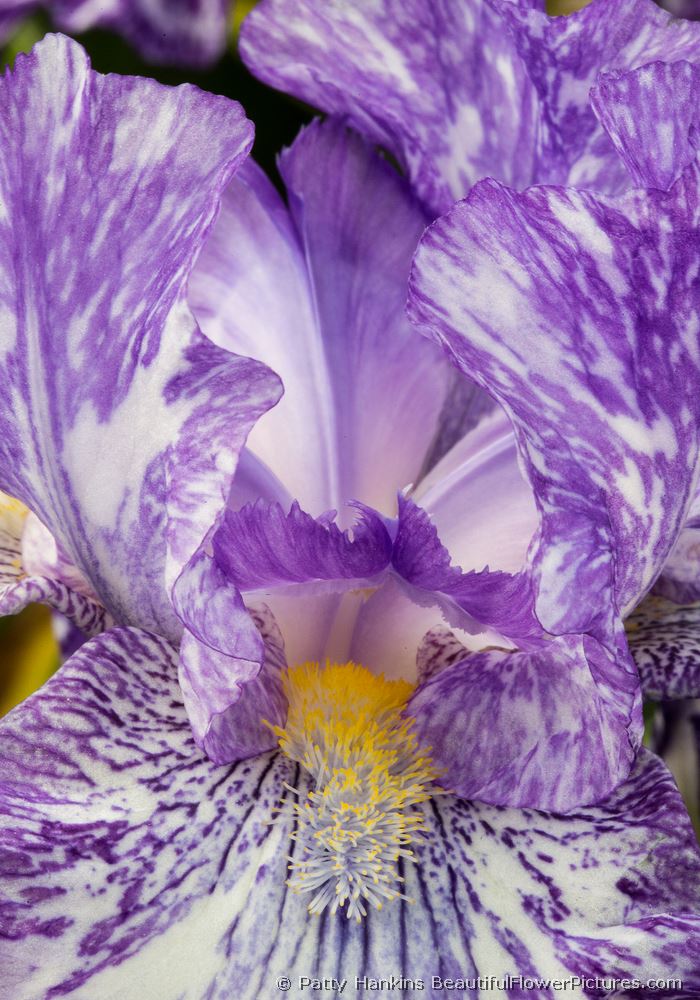
Purple Streaker Iris © 2013 Patty Hankins
3. Use a Tripod.I know — we live in an age of image stabilization/vibration reduction cameras and lenses, to say nothing of high ISO cameras so we can get faster shutter speeds — so a lot of the time we can get away with not using a tripod. But when it comes to close up photos I really recommend using one. When you are focused in on a very small area, the slightest motion of the camera (including that caused by clicking the shutter button) can introduce motion blur and lack of clarity in your focus. So if you want to take really crisp clear close up photos — use a tripod
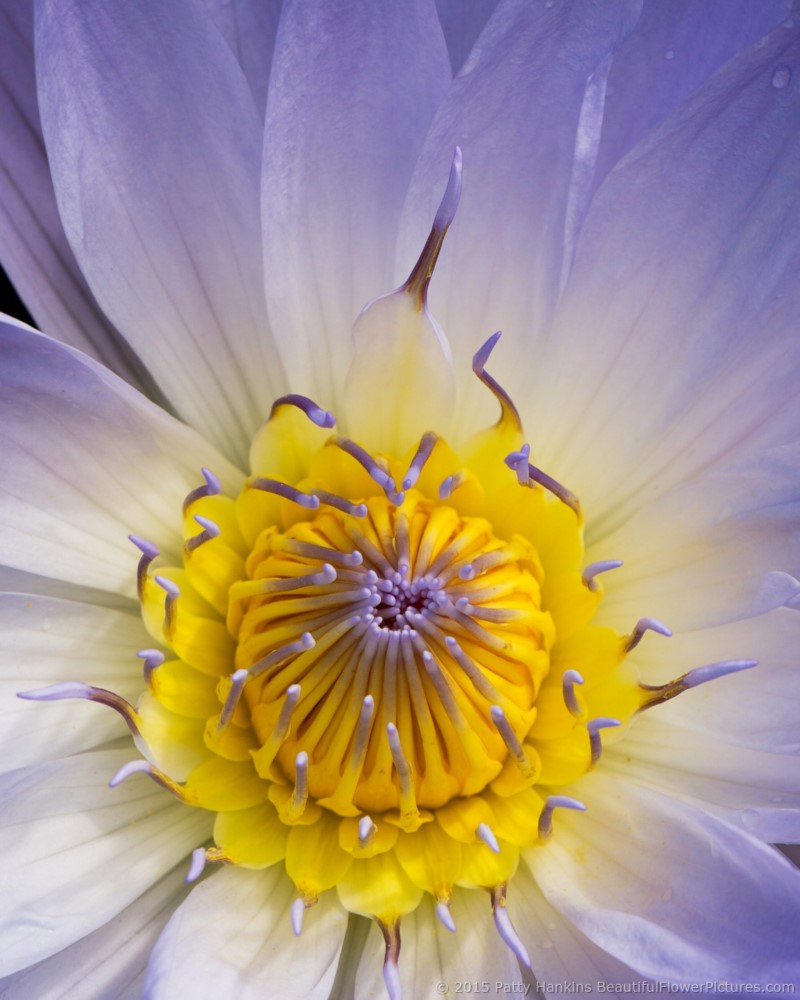
Bob Trickett Water Lily © 2015 Patty Hankins
4. Try Different CompositionsDon’t photograph the flower from just one angle. Move around and see what else you see. Try taking photos of the center of the flower, or the petals, or just one specific detail. If you’re photographing with a digital camera there is basicly no additional cost to taking more than one photo of a scene. So go ahead — try different compositions. Who knows — you may discover you like the petals of the flower better than the center!
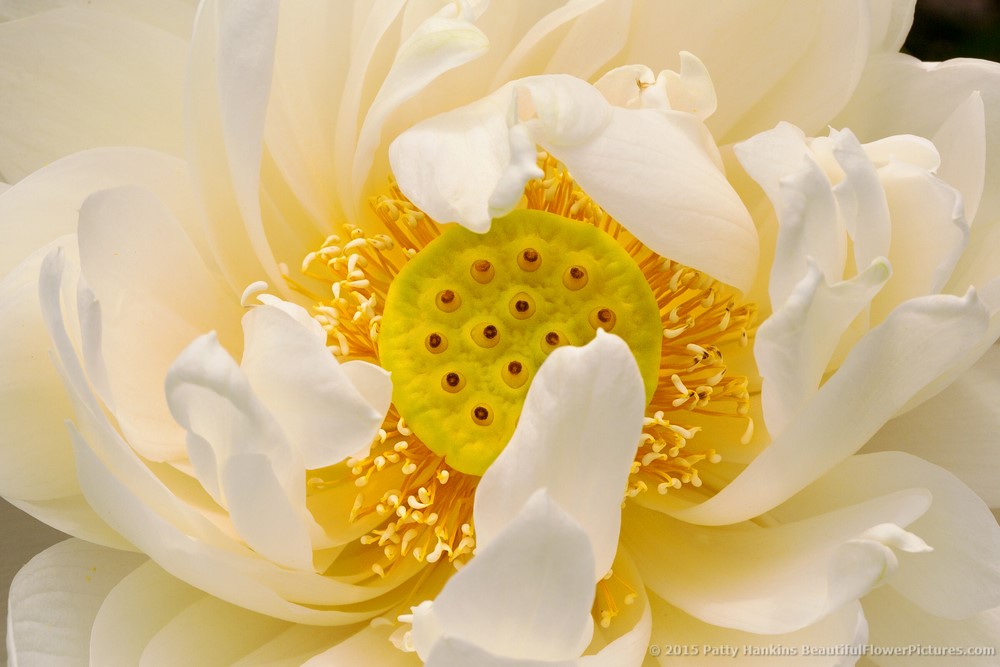
White Lotus © 2015 Patty Hankins
5. Try Different AperturesIf you are photographing in Aperture priority, try changing the aperture (f-stop) you’re using and see what this does to your photo. You may be surprised to find that sometimes a narrow depth of field gives you the look you want — and at other times, a larger depth of field is perfect for what you’re trying to show in the photo
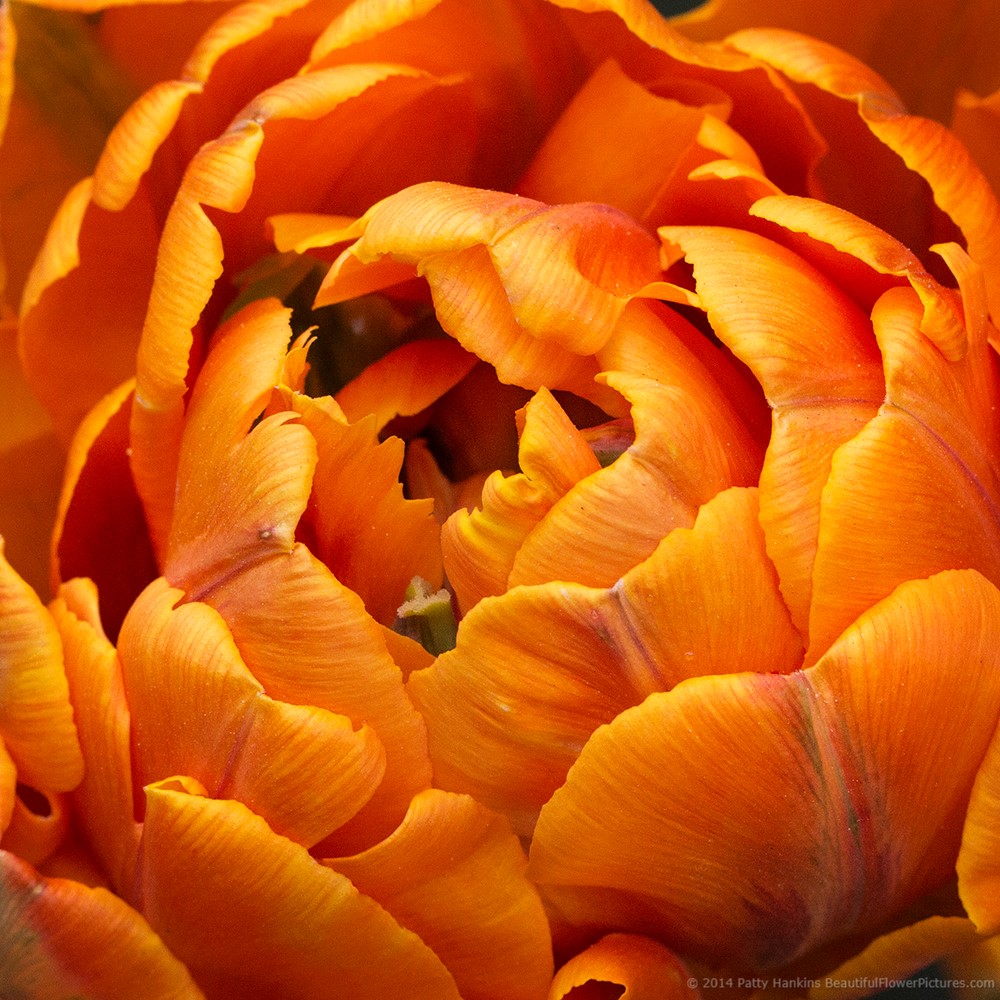
Orange Princess Tulip © 2014 Patty Hankins
Bonus Tip: Have Fun! Have fun while you’re photographing. Don’t forget to slow down and take few moments to appreciate the beauty of nature around you.
If you found these tips helpful – consider joining me for either of my spring flower photography workshops. Early Bird Registration for my May workshop ends today
May 15 – 20 – Photographing the Gardens of Philadelphia: http://beautifulflowerpictures.com/photographing-gardens-philadelphia/
June 9 – 11 – Photographing Flowers (Without Swearing at Your Camera) in the DC area: http://beautifulflowerpictures.com/photographing-flowers-without-swearing-2017/
If you have any questions about either workshop, just drop me a note and we’ll find a time to talk.
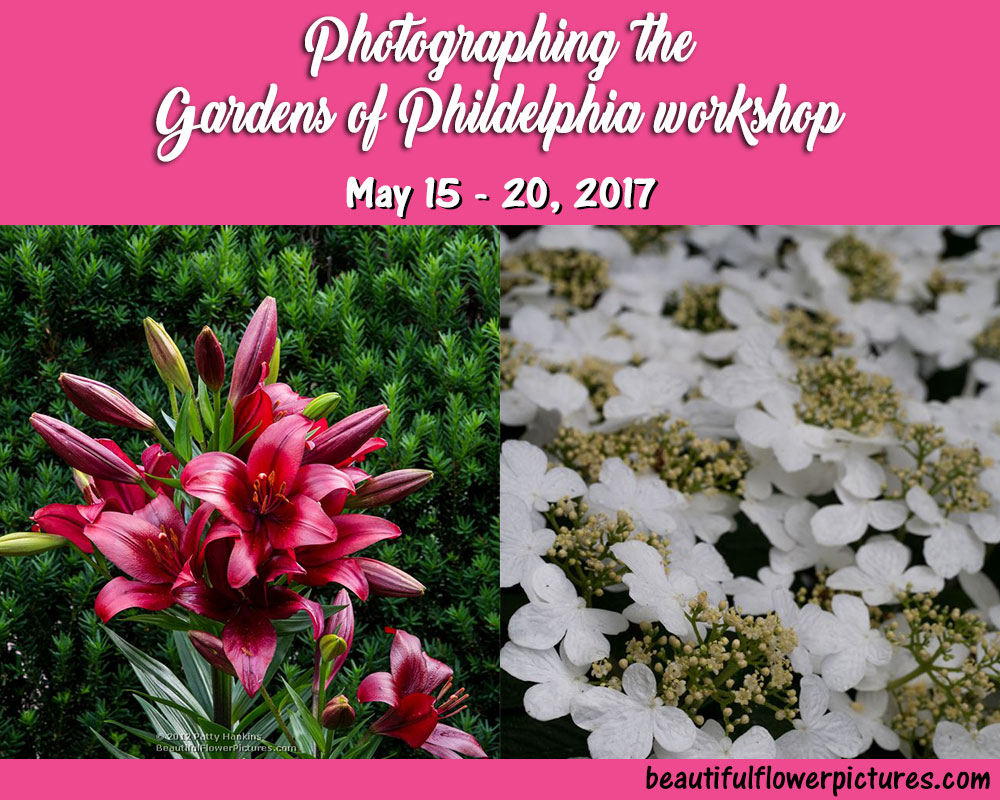
by hankinslawrenceimages | Mar 29, 2017 | Workshops
Early Bird Registration for my May 15 – May 20 Gardens of Philadelphia workshop ends Friday March 31.
All the info, including registrations info is on my website at http://beautifulflowerpictures.com/photographing-gardens-philadelphia/

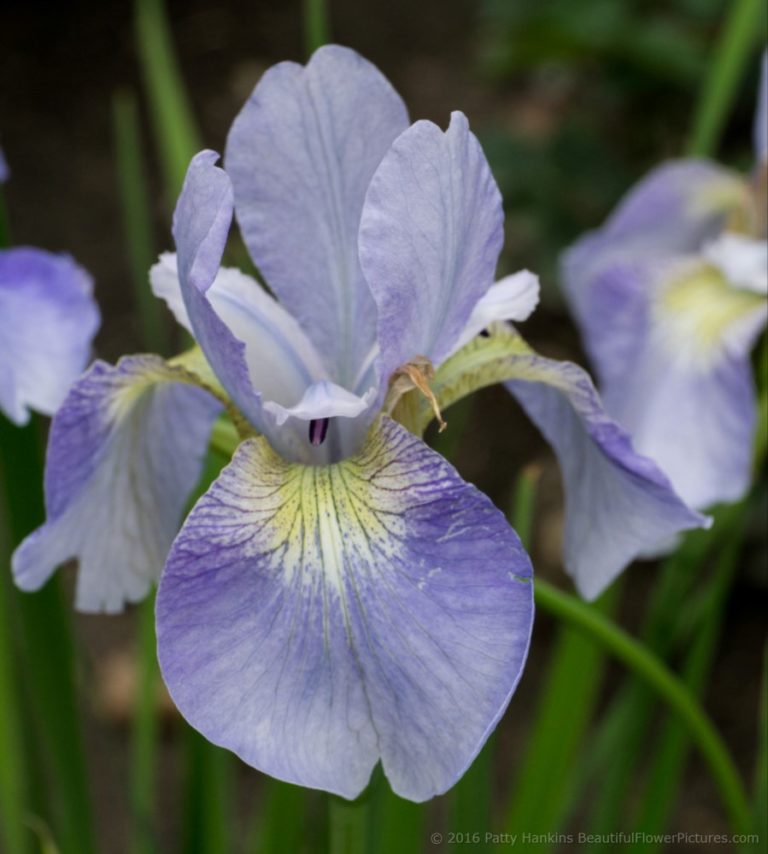
They say April Showers Bring May Flowers. Which means with 30 gardens in the Philadelphia are, that should be a perfect place to spend a week photographing flowers.
I would love to have you join me for a week of photographing flowers this May. Not only will we spend time photographing in several of the gardens in the Philadelphia area, we’ll also explore how to create the photographs that let you share the beauty you are seeing in nature.
The gardens we’ll be visiting may include Chanticleer, Jenkins Arboreatum, Longwood Gardens, Mt. Cuba Center, Presby Memorial Iris Gardens, and Winterthur Museum and Garden. Final decisions about which gardens to visit will depend on schedule, weather and most importantly – what’s blooming where the third week in May! We will also gather at our hotel for discussions of the art and craft of flower photography.
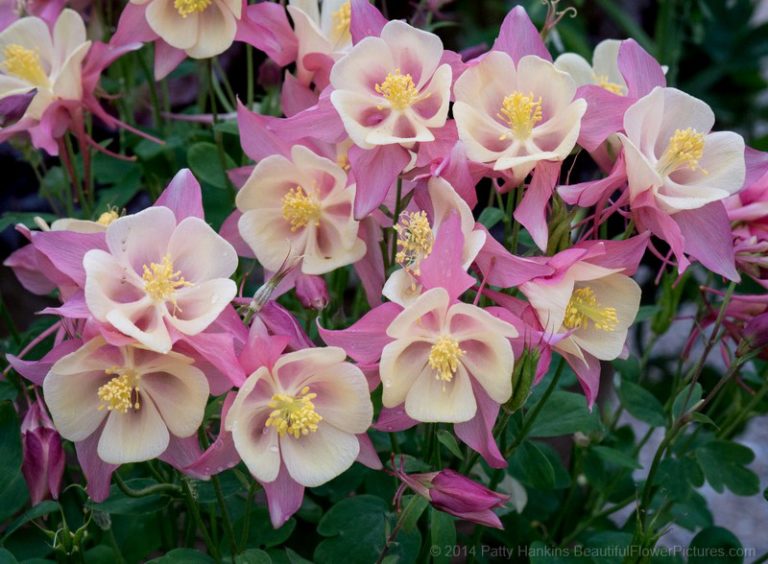

The workshop is limited to 6 participants to ensure that I’m able to give you the personalized attention you should get in a photography workshop.
All the info, including registrations info is on my website at http://beautifulflowerpictures.com/photographing-gardens-philadelphia/
Not sure if this workshop is right for you, drop me a note and I’ll give you a call and we can talk about it.
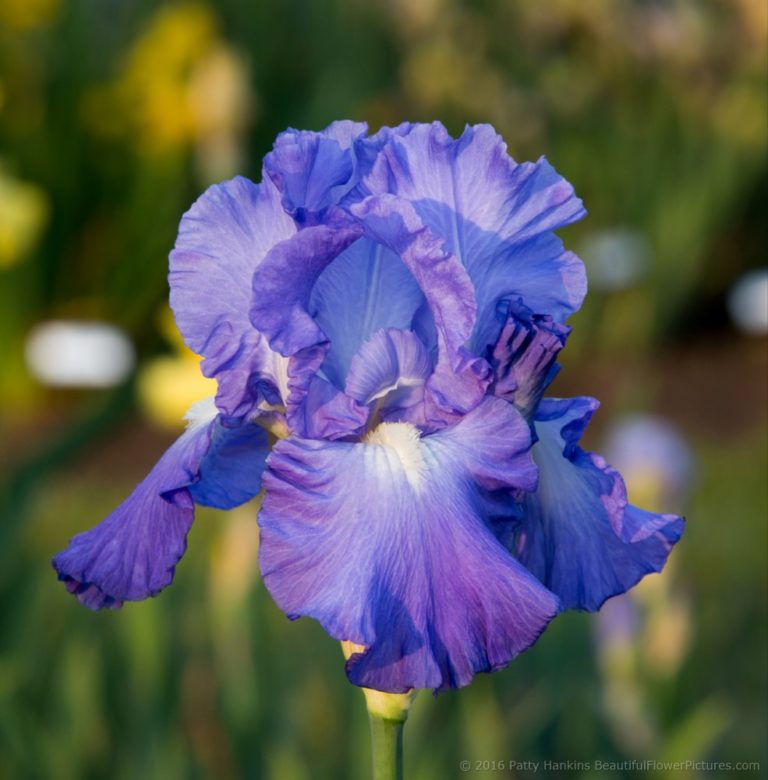

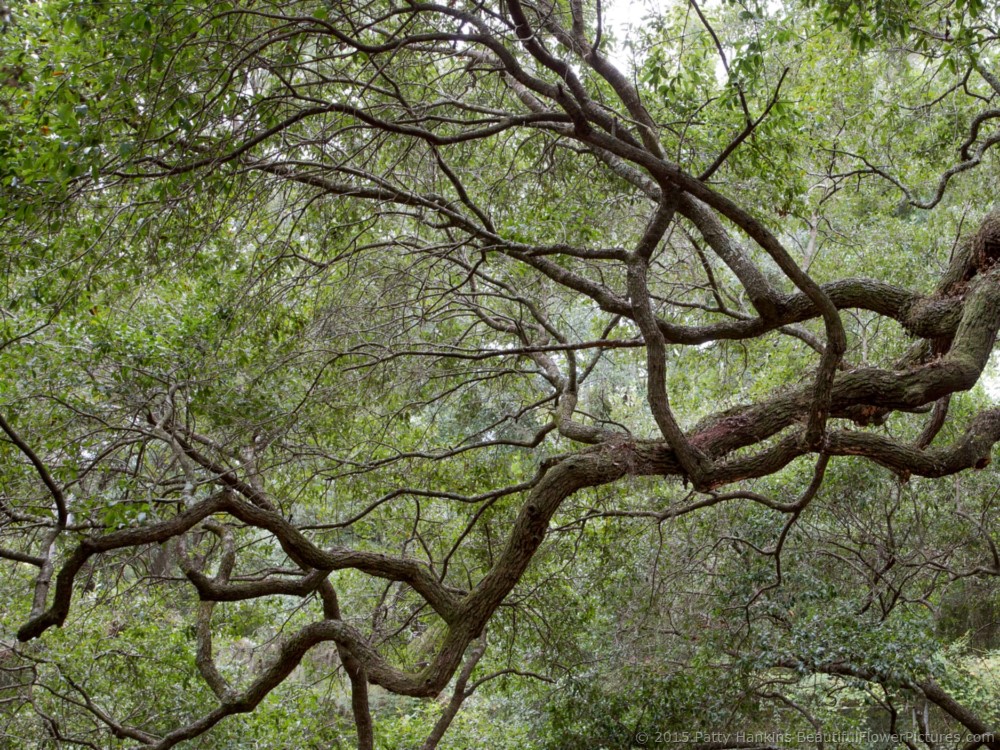
by hankinslawrenceimages | Jan 20, 2017 | Workshops
I love spring. For me, it means warmer weather, longer days, blooming flowers and wildflowers and a sense of renewal. And this year, I’m looking forward to spring more than usual.
For many, 2016 ended and 2017 began on a depressing note. And now, here in the United States, many of us are coping with shorter days, gray skies, colder weather and few flowers to photograph.
So now, I’d like to encourage you to plan for a great 2017 full of beauty. For photographers, that can mean planning a trip, taking a workshop, or even just taking time to explore somewhere local with your camera.

Marmorata Water Lily © 2015 Patty Hankins
For those of you in the Washington, DC area, I’d like to invite you to join my Meetup Group the DC Area Flower Safari. We head out photographing at a local garden on a monthly basis. You can find out more info about the DC Area Flower Safari on meetup at https://www.meetup.com/DC-Area-Flower-Safari/
Or if you’d like to come photographing with me, I am teaching three workshops this spring and would love to have you join me.
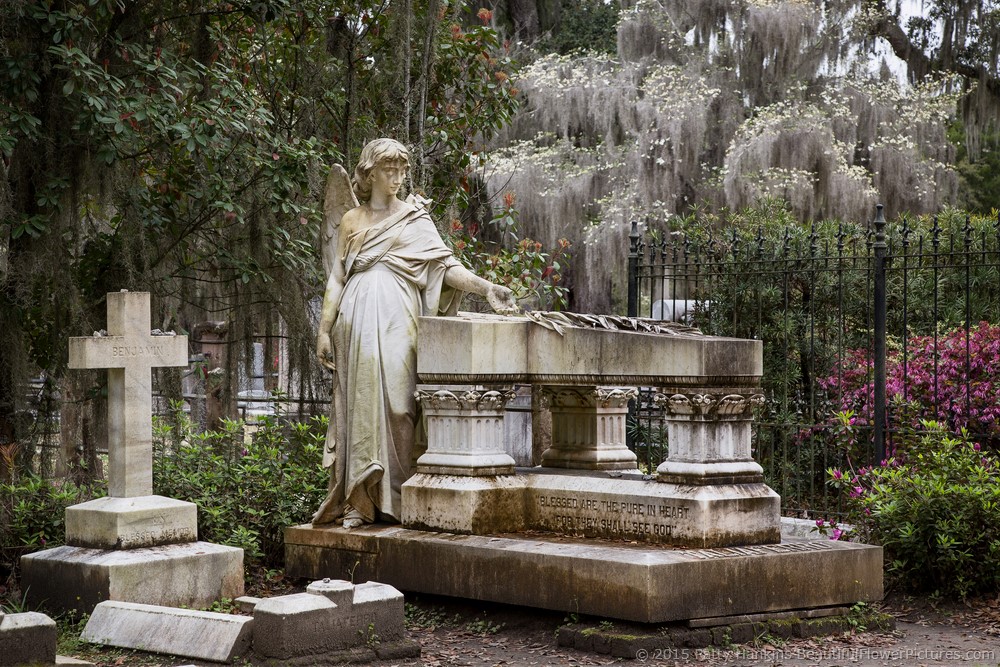
Graveyard Angel © 2015 Patty Hankins
Springtime in the South
I’ll be leading my Springtime in the South photo tour in late March. We’ll spend a week photographing from Savannah, Georgia to Charleston, South Carolina. So a week of exploring wonderful locations amid the dogwood blossoms, azaleas, and spanish moss. You can read more about my Springtime in the South photo tour at http://beautifulflowerpictures.com/springtime-south-savannah-charleston-south-carolina-low-country-2017/
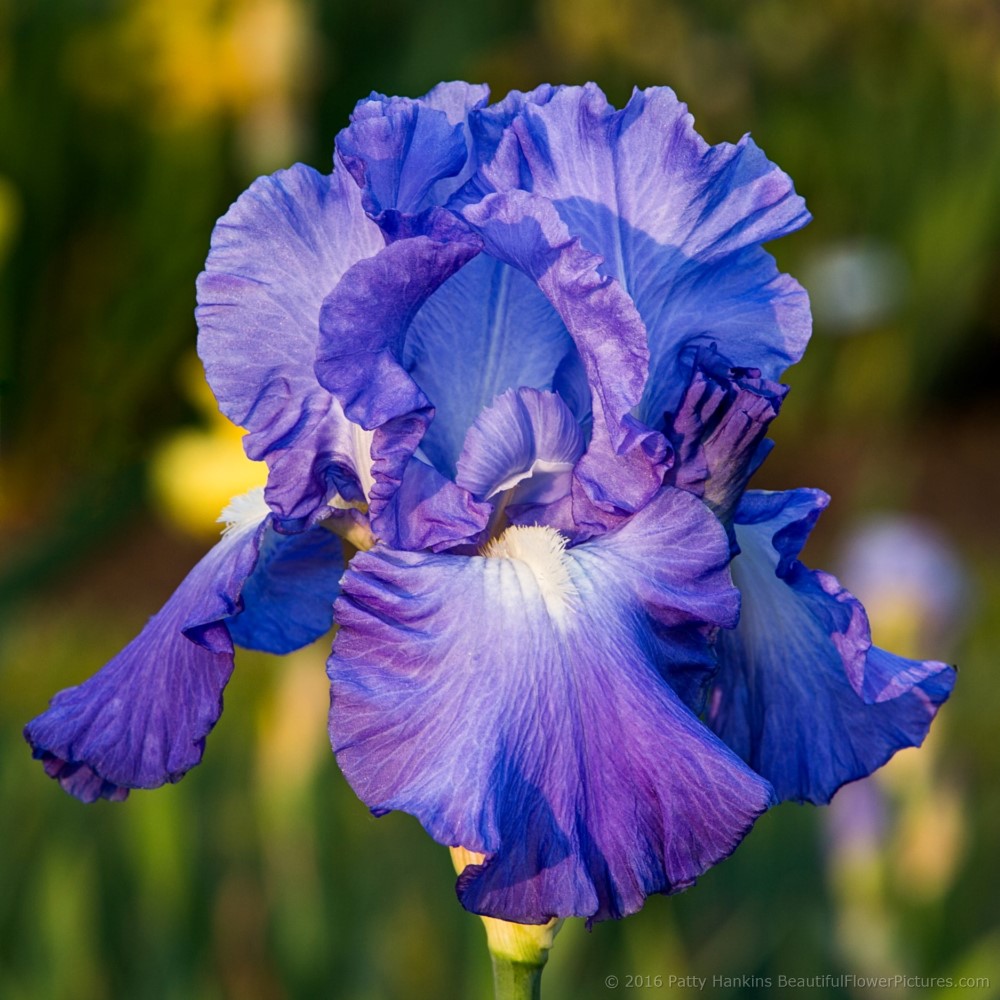
Song of Norway Iris © 2016 Patty Hankins
Photographing the Gardens of Philadelphia
I’ll be leading my Photographing the Gardens of Philadelphia workshop in mid May. We’ll spend several days exploring and photographing several of the 30 botanical gardens and arboretums in the Philadelphia area and then head to New Jersey to visit an incredible iris garden. You can read more about my Photographing the Gardens of Philadelphia workshop at http://beautifulflowerpictures.com/photographing-gardens-philadelphia/
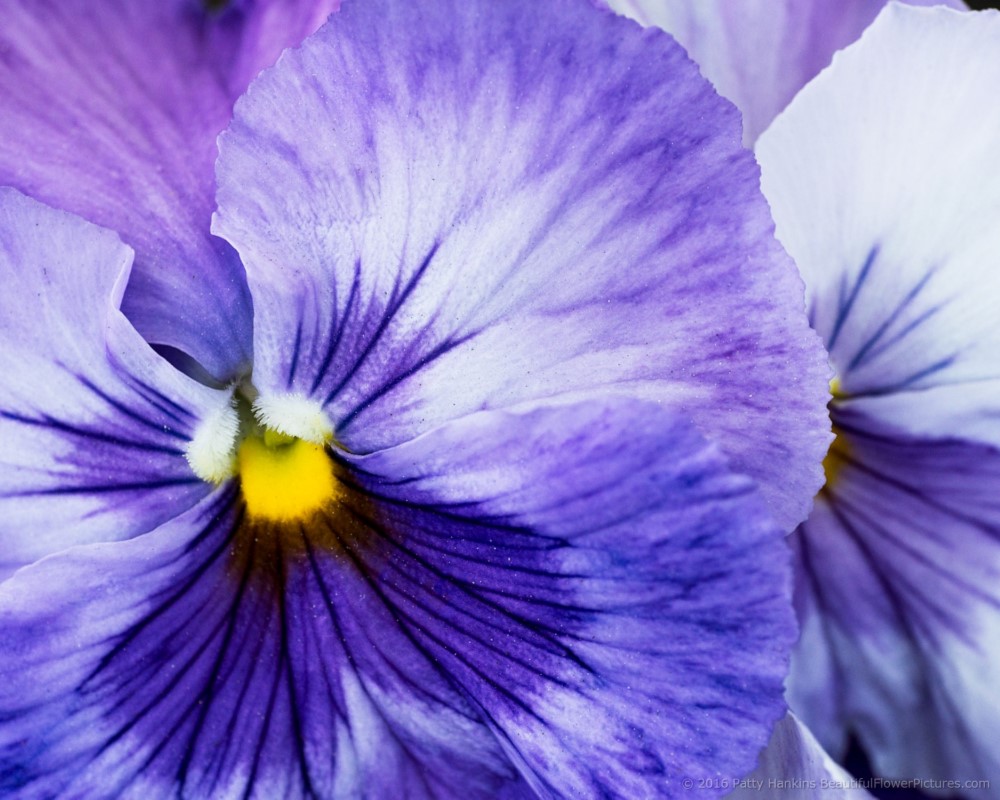
Purple Pansies © 2016 Patty Hankins
Photographing Flowers (Without Swearing at Your Camera)
And finally, I’ll be teaching a flower photography weekend workshop in the Washington, DC area in early June. We’ll visit some of my favorite local gardens photographing late spring and early summer blooms. This is the perfect workshop for people just getting started with flower photography or who only have a limited amount of time to take a workshop this spring. You can read more about DC area flower photography workshop at http://beautifulflowerpictures.com/photographing-flowers-without-swearing-2017/
I’d love to have you join me at one of the Flower Safari meetups or in one of my workshops. If you have any questions about any of them, just drop me a note at patty@hankins.net and we’ll find a time to talk.
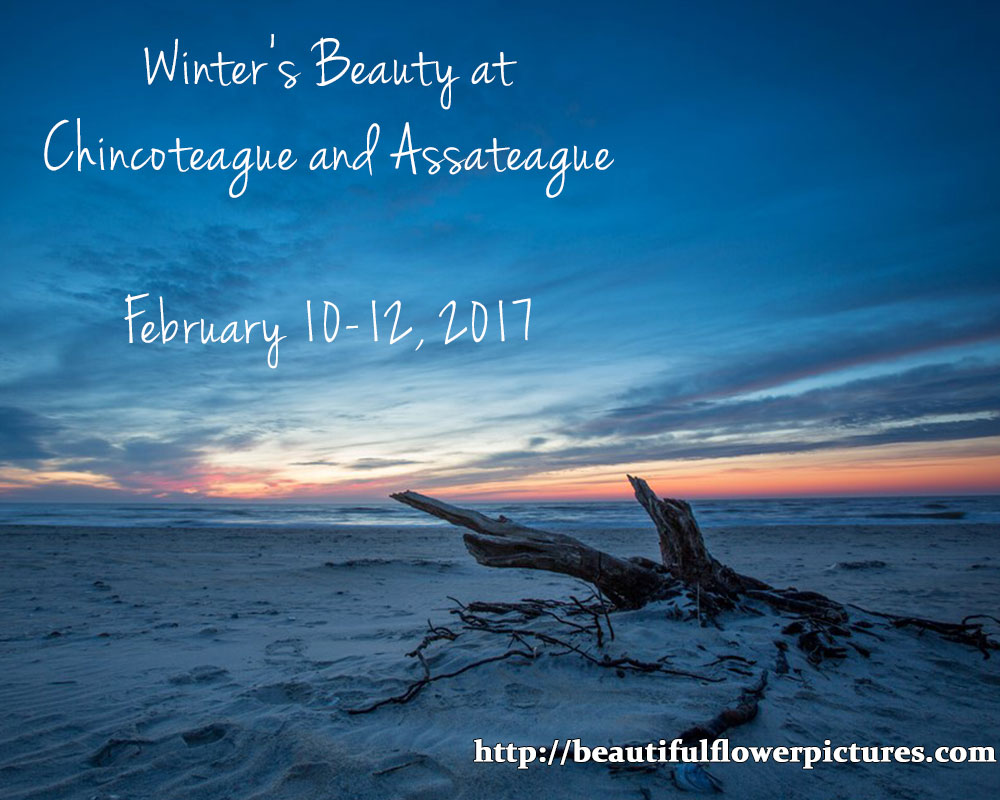
by hankinslawrenceimages | Jan 9, 2017 | Workshops
Early Bird Registration for our February 10-12 Winter’s Beauty at Chincotague and Assateague ends tomorrow – January 10.
All the info, including registrations info is on my website at http://beautifulflowerpictures.com/winters-beauty-chincoteague-assateague-feb-2017/
Bill and I love teaching our winter landscape photography workshop at Chincoteague. There’s just something incredibly peaceful about being in the marshes and on the beaches in the winter.
We often get asked – why do we teach our Winter’s Beauty at Chincoteague and Assateauge workshop in the winter? After all – we’re going to a beach – wouldn’t it be better to go in the summer?
Not really – winter is actually my favorite time of year to head to the Chincoteague National Wildlife Refuge and the Assasteague National Seashore. And here are my top 5 reasons why
- NO BUGS! Chincoteague and Assateague are famous for all the mosquitos and horse-flies in the summer. Kind of what you’d expect when you’re visiting a marsh and a beach – lots of annoying biting insects. I have never gotten bitten by bugs in the winter at Chincoteague and I’ve never had to cover myself with Deep Woods OFF!
- LOTS OF BIRDS! Located along the Atlantic Flyway, thousands of migrating birds visit Chincoteague National Wildlife Refuge in the winter. Several of the marshes, ponds and waterways are located near the refuge roads, so I’ve been able to photograph many birds without needed a super long lens (I usually use either my 70-200mm or 100-400mm lens when photographing birds at Chincoteague
- CONVENIENT LOCATIONS: Most of the places we’ll be photographing are within 100 feet of where we’ll be parking our cars. So if you get cold, you can jump back into the car to warm up before continuing to photograph.
- SHORT DAYS: In early February, the sun comes up at 7 AM and sets at 5:30 PM. In June, sunrise is at 5:40 AM and sunset isn’t until 8:30 PM. So in the winter, you can sleep in a bit, grab a cup of coffee and still photograph a wonderful sunrise. And in the evening, you can photograph sunset and still have ordered dinner and drinks at one of my favorite restaurants by 7 PM.
- NO CROWDS! Most people visit Chincoteague and Assateague in the summer, so crowded beaches and long lines at the park entrance are the norm. We’ve never had to wait in a line in the winter and it’s not uncommon to see less than 20 other people in the entire park in the winter.
We’re limiting the workshop to 6 participants to ensure that we’re able to give each of you the personalized attention you should get in a photography workshop.
All the info, including registrations info is on my website at http://beautifulflowerpictures.com/winters-beauty-chincoteague-assateague-feb-2017/
Not sure if this workshop is right for you, drop me a note and I’ll give you a call and we can talk about it.






























